12 Apr How to Handle Occupational Noise Exposure
Hearing loss is a common problem in the workplace. OSHA states about 22 million workers experience hazardous noise levels annually and exposure to harmful chemicals affects the ears of over 30 million employees.
Business paid over $1.5 million in penalties and $242 million in workers’ compensation benefits for hearing loss. Clearly, reducing noise exposure should be a priority for all companies.
Noise Exposure Risks
High noise levels can cause physical problems. Long-term exposure can lead to permanent hearing loss. Repeated short-term exposures can also lead to permanent hearing loss or ringing in the ears (tinnitus). Noise exposure can also impair focus, communication, and productivity.
OSHA requires employers provide jobs and a place of employment free from recognized hazards, including noise exposure.
Identifying Noise Hazards
OSHA suggests collecting existing information about noise hazards in the workplace. Next, a preliminary walk-through inspection with your health and safety officer can determine the source of the noise and work practices that cause excessive noise, which people are the most likely exposed to excessive noise, and possible ways to address noise issues. A preliminary assessment also helps to prioritize risk so the company can address the most critical issues quickly.
Employers should also thoroughly investigate any noise-related incidents and identify emergency and non-routine hazards to establish control measures.
Noise Limits
OSHA’s permissible exposure limit is 90 decibels for all workers for an 8 hour day. For every increase of 5 decibels, the exposure limit drops by half.
However, National Institute for Occupational Safety and Health research suggested stricter guidelines. They recommended all workers receive no more than 85 decibels for eight hours to minimize occupational noise induced hearing loss. For every increase of 3 decibels, the exposure limit drops by half.
NIOSH’s data prompted OSHA to strengthen their requirements for industry. Unless employers can reduce worker exposure to less than 85 decibels over 8 hours, they must implement a Hearing Conservation Program.
This comprehensive program includes measuring noise levels, free annual hearing exams and hearing protection, training, hearing protection evaluations, and more. It is a time-consuming, expensive venture, so it is much more desirable to eliminate noise exposure risks whenever possible.
Eliminating Risks
Fortunately, a company can do many things to reduce employee exposure to high noise levels. These are some of the most recommended methods.
Engineering Controls
Engineering controls include replacing or modifying equipment or any related physical adjustments that reduce the transmission of noise to a worker’s ears. In some cases, these changes offer sufficient noise control so the employer need not take further steps for compliance.
Examples of easily implemented engineering controls include buying low-noise machinery and tools, performing regular maintenance such as lubricating equipment and machinery, using sound walls or curtains between the noise source and worker, and enclosing or isolating the source of the noise.
Administrative Controls
Employers can also make administrative changes to reduce employee noise exposure. These include limiting employee exposure time near noise sources, distancing employees from noise whenever possible, operating noisy tools or machines in shifts to limit exposure, and providing employees with sufficient recovery time in quiet areas.
Increasing the distance between employees and noise is a simple, effective method to ensure employees who do not work in a noisy area or with noisy tools are not unintentionally affected. Doubling the distance between a worker and noise can decrease noise level by up to 6 decibels.
Hearing Protection Devices (HPDs)
Hearing protection devices can reduce risk, but employers should not rely on them alone. Earmuffs and earplugs mask noise, but they do not reduce noise in the workplace.
HPD effectiveness relies on employees always using their protection equipment in noisy environments. Unfortunately, 34% of the estimated 22 million US workers reporting hazardous workplace exposure reported non-use of HPDs.
Approximately 19% of noise-exposed tested workers across all industries have a material hearing impairment. It affects workplace productivity, leads to expensive workers’ compensation claims, and reduces the employee’s quality of life.
Gilbert’s Risk Solutions offers risk management to identify existing and potential noise exposure issues. A company consultation, diagnosis, and proactive planning can reduce the likelihood of employee noise exposure.


No Comments